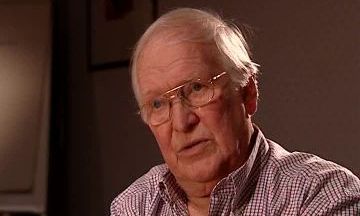I think I mentioned that the chemists were making analogues and derivatives of histamine, mainly concentrating on the imidazole ring, and one of the first things they did, the chemists, was to put methyl groups in every position, on the side chain, on the nitrogen. So methyl groups on the nitrogen just gave potent agonists which were longer lasting. Methyl groups on the ring either did nothing or in the 4 position of the ring, 4-methylhistamine, it became selective just for acid secretion. So it was like it was two histamines, if you like, what isoprenaline was to the beta receptors. And really that was the thin gruel which kept us going for 4 years – was 4-methylhistamine – and then 2-methylhistamine was selective the other way round.
Anyway, so the whole point of the story... I'll go back now and compare beta blocking story with the histamine story. As far as ICI [Imperial Chemical Industries] was concerned I... my recollection is that I promised them nothing other than if I was successful they had... would have a tool to answer a question, and I didn't know what way the conical question would fall out. It so happened that it fell out in their favour. And so, when we come to the histamine story, that's a different story altogether. This goes back now to 1905 when a substance, which claimed to be a substance, when gastrin was described as a substance you could extract from the mucous membrane of the gastric antrum and that... which stimulates acid secretion. Now, that discovery, if that's what it was, was shadow... overshadowed very quickly because the discovery of histamine would do the same kind of things which gastrin was claimed to do – lowering blood pressure, stimulating acid – and so there was confusion for many years about the relationship between gastrin and histamine. But by the time we got involved in this work, six... in the 60s, gastrin as a chemical entity was established. We knew it was peptide and we knew it was different. So there was histamine, there was gastrin, and also there was people like, Code arguing that gastrin acted by releasing histamine locally, and other people thought: rubbish. And so, again, the story that we put to Smith Kline – Bill – was, well, I don't know whether this is going to work because if histamine is not physiologically involved, there was this paper, Gastric Secretion: No Room for Histamine, and so... so it was just a pharmacological by-product. And so I couldn't be certain that if gastrin, which was the main stimulant... physiological stimulant of that secretion, wasn't acting through histamine, then a... an H2 antagonist wouldn't block it, but that was the thing we ought to be able to get an answer. And so we couldn't really be sure that it was going to work, but of course it did. So that was illuminating to the gastrin rhesus histamine story, which is pretty well known; standard dogma in acid secretion.






